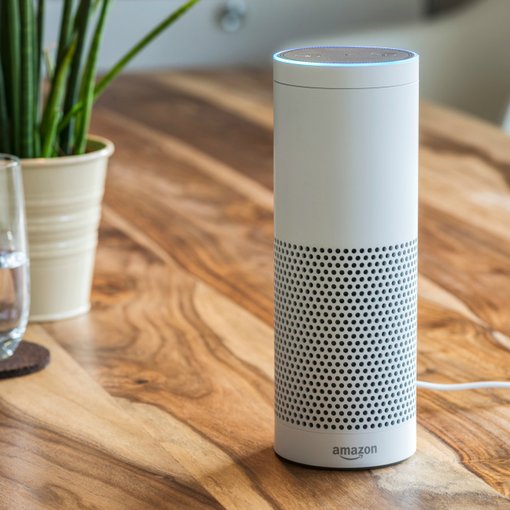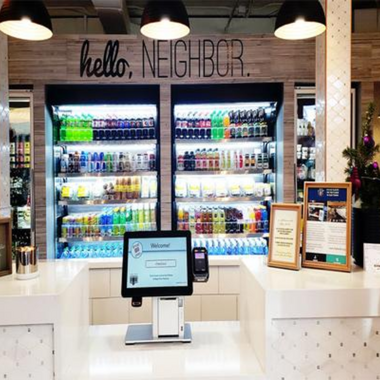
- Four minutes read
Voice-activated payments: The road ahead
Consumers’ dislike of friction is well-documented. And merchants have had to adapt to this new reality by offering seamless online and offline experiences and more payment choices.
In Bicentennial Man, Robin Williams played Andrew, a robotic household assistant. Andrew’s initial interactions with his owners are awkward and tentative. But, over the next 200 years, he develops increasingly human characteristics and forms powerful emotional bonds. Eventually, he finds true love and marries Portia, his original owner’s great granddaughter.
While we’re still a long way away from having humanoid robots in our households — let alone robots that fall in love and get married — talking to inanimate objects has become mainstream. Siri, Alexa, Google Assistant, and others have found their way into every device imaginable, from smartphones to speakers, watches, light bulbs, and even vacuum cleaners. The technology is also continually improving: Amazon’s Alexa now has 25,000 skills, while IBM’s speech recognition algorithm has managed to set a record low 5.9% error rate (the human error rate is 5.1%).
Globally, 600 million people use a voice assistant at least once a week, with ample opportunity for further growth. But will this enthusiasm for voice-controlled devices give voice-activated payments the upper hand over other digital payment methods? Or is voice technology still too young to be trusted with our money on a large scale?
From early adoption to mainstream appeal
Consumers’ dislike of friction is well-documented. And merchants have had to adapt to this new realityby offering seamless online and offline experiences and more payment choices. But, it looks like we’re moving towards an even bigger shift.
According to PYMNTS’ How We Will Pay report, 60% of consumers now take issue with the act of shopping itself, finding it unproductive, inefficient, time-consuming and boring. The very nature of voice technology, that is the ability to instruct inanimate objects to do the jobs you don’t want to do, taps into this zeitgeist. By eliminating our need to participate in the actual act of searching for a specific product, comparing prices, paying, and arranging delivery at a convenient time and place, voice technology could potentially re-shape not just the way we pay, but the entire customer experience. Banks and other payment providers are exploring voice-activated technologies with uncharacteristic speed, which means early adopters have a number of options. PayPal was ahead of the game when it introduced voice-activated payments in 2016. In 2017, Barclays, Santander and the Royal Bank of Canada followed suit. And Bank of America, Wells Fargo, Citi and ING plan to launch voice-activated services soon.
However, consumer confidence has some way to go. While 74% of those we surveyed for our Lost in Transaction study said they’d heard about the technology, only 15% had actually used it to make a payment.
Familiarity, trust, and the road to consumer confidence
Part of the issue consumers have with voice-controlled payments seems to be down to a lack of familiarity. 39% of respondents to our study said that, as things stand, the technology is just too risky and unknown. As our daily exposure to the technology continues to increase, this should become less of an objection, and more people will become more open to giving voice-activated payments a try.
In the US, 75% of households are expected to own at least one smart speaker (such as the Amazon Echo) or other voice-enabled device by 2020, with 31% of adults using them regularly to shop, send money and pay bills by 2022. Across the Atlantic, only 9% of UK households owned a smart speaker in 2017. However, penetration is expected to hit 40% in 2018. And the number of Brits who make voice payments is also expected to triple.
Early movers can expect to gain a significant competitive advantage simply by being the first in the space. Case in point, a BI Intelligence survey found that Siri is the voice assistant most trusted to make payments securely, while Amazon’s Alexa is second. The less known Microsoft Cortana and Samsung’s Bixby, which only launched in mid-2017, trail considerably behind. As Amazon’s Alexa Super Bowl commercial shows, there is big money being invested in growing familiarity and trust amongst consumers.
Security and privacy: A stumbling block
While the increasing penetration of, and familiarity with, voice technology into 2018 and beyond will grow trust amongst consumers, it’s not the only issue that has to be addressed.
According to our research, 25% of consumers are worried about security and privacy, even though they can appreciate the benefits offered by voice technology. Brits in particular seem especially concerned, with 43% of respondents in one study saying they worry voice assistants could be used to listen in on their private conversations.
These concerns aren’t entirely unfounded. Researchers at Zheijiang University have recently developed a proof-of-concept attack which, while entirely theoretical, shows it might be possible to use inaudible voice commands to control voice activated devices. A BBC journalist’s twin has also managed to fool voice recognition software simply by mimicking his brother’s voice, even though the technology uses more than 100 identifiers to confirm the speaker’s identity.
Such incidents do shed doubt on voice’s suitability as the sole biometric identifier in a transaction. So, in future, we could well see the technology being strengthened by additional authentication, such as fingerprint or face ID.
Voices raised
With the technology evolving at a rapid rate, it’s too early to tell where voice-activated payments could go next. What’s for sure is that they hold great potential. They’re convenient. They save time. And they promise to take the frictionless customer experience to the next level, ushering in an era where we don’t have to lift a finger to complete tasks we don’t have time for or simply don’t want to do.
The challenge is to address consumers’ security and privacy concerns, ensuring voice-activated payments offerings aren’t just easier and faster to use, but also safer. A step up over the status quo.




